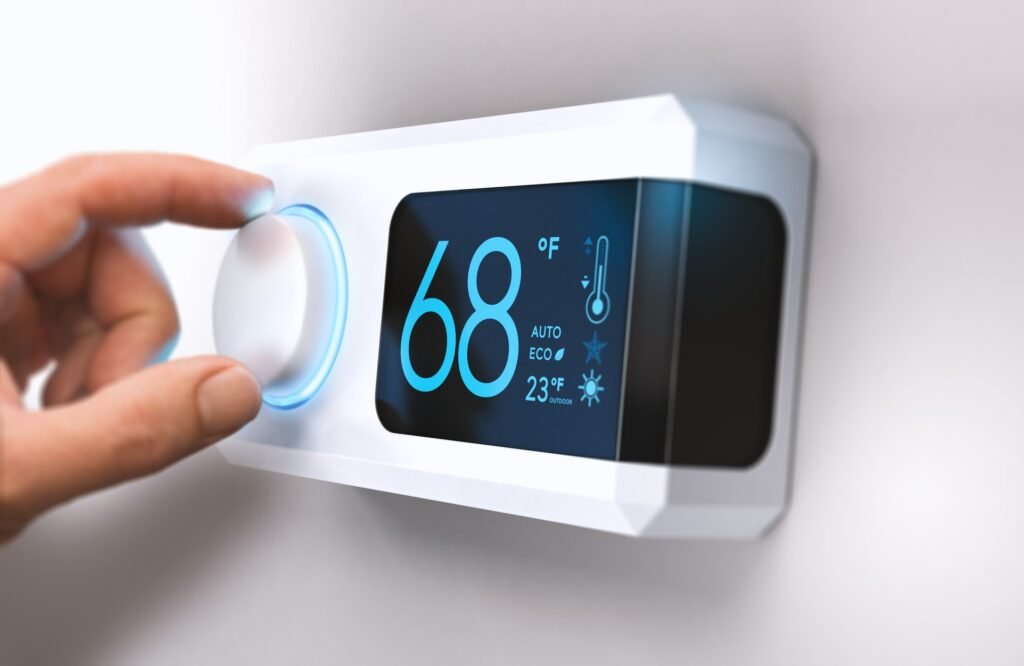Lowering HVAC (Heating, Ventilation, and Air Conditioning) costs is not only beneficial for your wallet but also for the environment. By adopting green practices, you can reduce energy consumption, decrease greenhouse gas emissions, and contribute to a sustainable future. Here are some eco-friendly ways to lower HVAC costs.
Programmable Thermostat
Have a Green HVAC Company install a programmable thermostat to automatically adjust the temperature based on your schedule. Set it to lower temperatures during the winter and raise them during the summer when you’re away or asleep. This prevents unnecessary energy consumption and can significantly reduce HVAC costs.
Proper Insulation
Ensure that your home is properly insulated. Insulation will help prevent heat loss during the winter and heat gain during the summer. Insulate walls, floors, and attics to minimize the transfer of heat. This will help maintain a comfortable indoor temperature and reduce the load on your HVAC system.

Regular Maintenance
Schedule regular maintenance for your HVAC system to ensure it operates efficiently. Clean or replace air filters as recommended, as clogged filters restrict airflow and increase energy usage. Additionally, have a professional inspect your system annually to identify and fix any issues that may affect its efficiency.
Energy-Efficient Equipment
Consider upgrading to newer HVAC equipment that is designed to be energy efficient, such as Energy Star-certified models. These systems are designed to use less energy while providing the same level of comfort. Look for high SEER ratings for air conditioners and high AFUE ratings for furnaces.
Natural Ventilation
Take advantage of natural ventilation whenever possible. Open windows and use fans to circulate fresh air during moderate weather conditions. This can reduce the need for artificial cooling or heating, thereby lowering HVAC costs.
Seal Air Leaks
Identify and seal air leaks in your home. Common areas for air leakage include windows, doors, and ductwork. Use weatherstripping, caulk, or sealant to close gaps and cracks, preventing conditioned air from escaping and unconditioned air from entering.
Smart Zoning
Implement a smart zoning system to control the temperature in different areas of your home independently. This allows you to heat or cool only the rooms that are occupied, rather than the entire house. Smart thermostats and dampers can be used to achieve efficient zone-based temperature control.
Shading and Insulation
Use shades, blinds, or curtains to block sunlight during the hot summer months. This prevents excess heat from entering your home, reducing the workload on your air conditioner. Additionally, insulate air ducts to minimize heat loss or gain during distribution.
Energy-Efficient Windows
Consider upgrading to energy-efficient windows that offer better insulation and thermal resistance. These windows can help maintain a more stable indoor temperature, reducing the need for HVAC usage.
Renewable Energy Sources
Explore the possibility of utilizing renewable energy sources to power your HVAC system. Solar panels, for instance, can generate clean electricity to operate your system, reducing reliance on grid-based energy and lowering HVAC costs.
By adopting these green practices, you can make a significant impact on reducing HVAC costs while promoting environmental sustainability. Conserving energy and reducing greenhouse gas emissions contribute to a greener future for both your wallet and the planet.